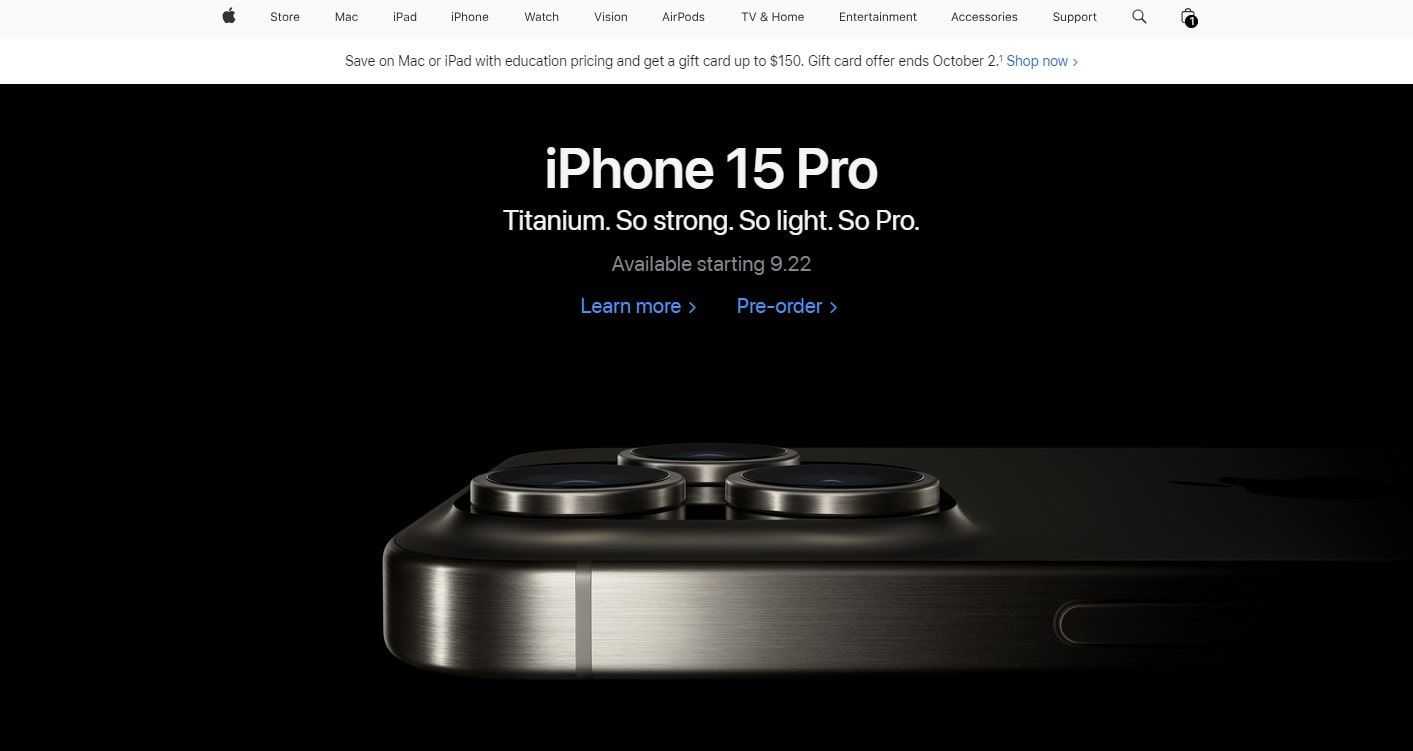UX design is fundamental in the digital era, when user engagement with websites and apps can either make or ruin a company. UX design is about how a good feels and functions in the hands of the user, not only about its appearance. The UX design process—a methodical methodology used by designers to guarantee that every component of a product corresponds with the needs and expectations of the user—is examined in this paper. By use of meticulous analysis, prototyping, and testing, the UX design process seeks to improve usability and offer a flawless experience that maintains users interested and contented. Businesses may avoid common mistakes, maximize their digital platforms, and finally increase customer retention and loyalty by knowing and using a methodical UX design process. Examining the nuances of UX design will help us to understand the value of every stage in the process and how it helps to produce a user-centered product that not only meets but beyond consumer expectations.
What is UX Design?

UX design is the practice of producing goods with significant and pertinent experiences for consumers. Fundamentally, UX design is user-centered, with an eye toward the user’s path and interactions with a good. This field encompasses knowledge of the demands, behaviors, and objectives of the user, therefore transcending just aesthetic appeal of a design. UX design mostly aims to increase the usability and accessibility of a product therefore guaranteeing its simplicity and ease of use.
Important facets of user experience design consist in:
- Knowing the needs, preferences, and user pain areas helps one to conduct user research.
- Creating basic sketches or layouts of the structure of a product, wireframing
- Constructing a working model to test user interface and functionality is known as prototyping.
- User testing is compiling comments from actual users to hone the design.
UX design enables the creation of not only useful but also pleasurable to interact with products by emphasizing the user’s experience. The process comprises several components, including wireframing, prototyping, and user testing, all of which are meant to help the product to best fit the demands of the user. UX design is basically about establishing a harmonic relationship between the user and the product so that every interaction is as seamless and fulfilling as it may be.
What is a UX Design Process?
The UX design process is a methodical process followed by designers to produce goods satisfying the particular needs of the user. Usually, this procedure consists in several important phases:
- User research helps one to better understand user behavior, preferences, and pain issues.
- Ideation: Generating ideas addressing user needs through brainstorming and concept development.
- Making low-fidelity versions of the product to test and iterate on helps with wireframes and prototyping.
- User testing is the gathering of user comments intended to improve the design.
At this point, knowing the user is absolutely vital since it guides every next design decision. The UX design process is iterative, hence designs are constantly improved depending on user comments until they exactly meet user expectations. This approach not only guarantees that the end result is user-friendly but also reduces the possibility of expensive redesigns following introduction. Following a disciplined UX design process helps companies produce products that are both pleasant and useful, therefore raising user happiness generally.
Why is the UX Design Process Important?

Since it guarantees that the product is created putting the user’s needs first, the UX design process is absolutely essential. Here’s why it’s so important:
- Early on in the development process, early problem identification finds and fixes usability concerns.
- Retaining users depends on the product being straightforward and understandable, hence user-centered design guarantees just that.
- Constant Improvement: Enabled by user comments, it is possible to continuously enhance a product such that it develops with the demands of the user.
Early identification and solution of usability problems made possible by a well-organized UX design process helps to save time and money. Retaining consumers in a competitive market depends on the product being not only functional but also easy to use, hence this approach guarantees that by concentrating on the user it is also clear. Furthermore, the UX design process lets one constantly develop depending on user comments, therefore producing a product that changes with the needs of the user. By use of this iterative process, a product is created that not only satisfies but beyond consumer expectations, therefore fostering more satisfaction and loyalty.
Key Steps in the UX Design Process
Understand the User Needs:
- First, find the needs, behaviors, and pain issues of the user by means of exhaustive user research. This helps to produce a design really user-centered.
- Get thorough understanding by means of surveys, interviews, and usability testing. Design that fits the user’s expectations depends on an awareness of these needs.
- Recall that design should be done with the user in mind so that every choice improves the UX generally.
Simplicity in Design:
- UX design calls for simplicity. Steer clear of clutter and concentrate on producing a simple, understated style that lets the user move throughout the interface with ease.
- A simple approach helps consumers locate what they need fast, therefore lowering frustration and enhancing their relationship with the product.
- Make sure every component of the design serves a function and enhances UX.
Consistency Across the Interface:
- UX design consistency guarantees users’ simple navigation of the product free from uncertainty. Overarching the design, use consistent colors, typefaces, and button styles.
- This involves keeping constant menu positioning, which enables users to interact with the design with trust and familiarity developed by means of consistency.
- Inconsistent design components might irritate people, therefore affecting the UX and influencing opinions of the product.
Effective Feedback Mechanisms:
- Incorporate in the design transparent and instantaneous feedback systems. For example, make sure a user clicks a button receives an instantaneous visual or aural reaction.
- Feedback clarifies for consumers if their activities have been successful or whether they should act further.
- Effective feedback helps users to avoid feeling lost or frustrated, therefore influencing the UX greatly.
Test and Iterate:
- The UX design approach revolves much around testing. Use usability tests to get user comments on the simplicity and efficacy of the design.
- Apply this comments to iteratively enhance the design so that it always develops to satisfy the needs of the users.
- Frequent testing and iteration assist improve the design, so making it more user-friendly and matching with the expectations of the users.
Prioritize Accessibility:
- UX design depends critically on accessibility. Make sure anyone with all abilities—including those with disabilities—can use your design.
- For those who cannot use a mouse, employ easily navigable design by keyboard, alt text for images, and simple color schemes.
- Designing for accessibility shows a dedication to inclusivity as well as improves the UX for a larger audience.
Optimize for Mobile:
- Your UX design must be responsive and mobile-friendly given so many people access materials on mobile devices.
- Optimize the design to fit several screen sizes and make sure that on smaller displays all components—including buttons and menus—are readily tappable.
- In the multi-device environment of today, a mobile-optimized design is absolutely vital since it offers flawless interaction across devices, therefore enhancing UX.
Implement Efficient Navigation:
- UX design depends much on navigation. Make sure users could quickly locate what they are seeking for without needless clicks or uncertainty.
- Guide users through the material quickly with well-organized site maps, breadcrumb trails, and simple, understandable menus.
- Bad navigation could irritate users and lead them to give up on the product. Effective navigation makes exploring the design simple, therefore improving the UX.
Use Data-Driven Design Decisions:
- Apply user data and analytics to guide your design choices. Know where users drop off, where they spend most time, and which aspects they most interact with.
- Data-driven design lets you develop a UX fit for your consumers’ real behavior and preferences, therefore improving the efficiency and gratification of the UX.
- Constant analysis of user data helps you to make deliberate changes to the design that better satisfy user needs and raise general usability.
Maintain Scalability:
- Your UX design has to be able to expand with your product without sacrificing UX. Starting with modular design components that are readily updated or expanded, plan for scalability from the outset.
- Make sure that any introduced features complement the current design so as to provide a consistent and logical UX.
- In UX design, scalability guarantees that your product may develop and grow without compromising the UX, so keeping users happy as your company grows.
Provide Clear Call-to-Actions (CTAs):
- Guiding people through the intended activities in your design is mostly dependent on CTAs. Make sure your CTAs are striking, clear, and convincing.
- Speak in practical terms, such “Sign Up,” “Learn More,” or “Get Started,” urging consumers to interact. CTAs should be positioned strategically to draw the user in without being invasive.
- By guiding users toward simple understanding of what actions to take next, clear and effective CTAs improve UX and hence increase engagement and conversion rates.
Focus on Content Design:
- The UX consists in great part on content. Make sure your design’s material is orderly, brief, and pertinent to the user’s demands.
- Break the material and simplify the content using headings, bullet points, and images. Steer clear of jargon and instead speak in terms your target market would find appealing.
- Good content design keeps users informed and satisfied by offering useful knowledge in an easily available and interesting way, therefore improving their UX.
Finally
The UX design approach is a philosophy that centers the user in every choice, not only a set of actions. Businesses can produce not just highly useful but also rather pleasing products by fully knowing the user and iteratively improving the design. One cannot stress the value of the UX design process since it is the means to produce user-centered goods unique in a saturated market. As we have shown, this process—which is meant to improve the general UX—involves rigorous research, deliberate design, and ongoing testing.
Basically, the UX design process:
- Beginning with user research, one can grasp needs.
- Develops ideas and prototypes to create answers by means of movement.
- includes user testing to improve the design by means of perfection.
Mastery of the UX design process is not only a need but also a must for any company hoping to thrive in the digital sphere. Companies may guarantee that their products not only satisfy consumer wants but also offer an experience that makes them returning by pledging to this procedure.
